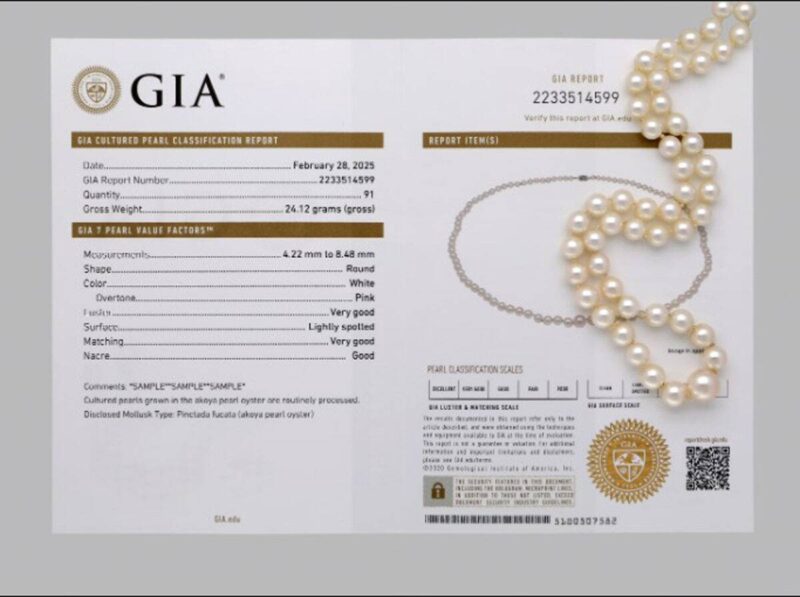The Gemological Institute of America (GIA) has revised its pearl classification system to include a more detailed nacre grading scale, which will now be applied to all GIA pearl classification reports.
The update introduces a five-tiered nacre grading system, replacing the previous binary classification of “Acceptable” and “Unacceptable.” GIA states that the change reflects feedback from pearl industry stakeholders seeking more alignment with other quality factors.
From Binary to Graduated Assessment
Previously, GIA’s nacre evaluation classified pearls as either “Acceptable” or “Unacceptable” based on factors such as thickness, layering, and visible surface damage. The revised system now categorises nacre quality as Excellent, Very Good, Good, Fair, or Poor, providing a more detailed assessment.
This change follows GIA’s research involving a broad selection of pearls with varied surface and subsurface features. The new scale is intended to reflect the continuity and condition of nacre in a way that aligns with other value factors used in pearl grading.
New Standards in Pearl Reporting
The revised classification includes visual assessment and post-harvest conditions, such as wear, damage, modifications, and treatments. Pearls are evaluated for visible nacre variation on the surface and sub-surface, along with adherence to trade standards for thickness.
Tom Moses, GIA’s Executive Vice President and Chief Laboratory and Research Officer, commented:
“Nacre formation plays a critical role during a pearl’s growth, as its structure influences other value factors such as size, shape, luster, and surface quality. Nacre thickness and continuity also affect the pearl’s durability. This update on the nacre quality scale provides improvement to the existing nacre quality description for the GIA 7 Pearl Value Factors classification system that better serves our clients.”
Implications for the Trade
The majority of pearls submitted under the new system are expected to be classified as having “Good” nacre, replacing the previously used term “Acceptable.” For jewellers, this provides a more descriptive classification, supporting clearer communication with buyers.
The update brings nacre evaluation in line with the GIA 7 Pearl Value Factors – Size, Shape, Colour, Nacre, Lustre, Surface, and Matching – which form the basis of GIA’s pearl classification. The revised scale provides a more detailed nacre assessment consistent with the Institute’s reporting practices.
GIA has offered pearl identification and classification since 1949 and contributed to revisions of the U.S. Federal Trade Commission’s guidelines on pearl terminology. It continues to work with international stakeholders to maintain and refine standards used in the global pearl trade.



